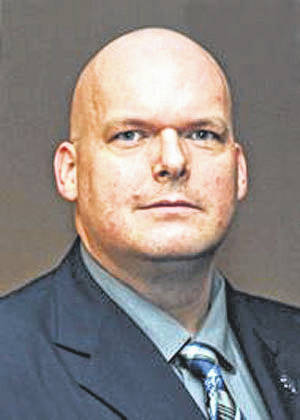
Two weeks ago, Ohio’s brand-new, governor, Mike DeWine, took the oath of office in the statehouse. On hand witnessing the ceremony was Mr. DeWine’s newest colleague, Gov. Matt Bevin of Kentucky. During his remarks, Mr. DeWine remarked that he and Gov. Bevin need to work together on some notable projects, most notably the Brent Spence Bridge in Cincinnati.
For the uninitiated the Brent Spence Bridge is the bridge that takes Interstate 71 and Interstate 75 traffic across the Ohio River. The bridge, built in 1963, is one of the busiest bridges in the country. Roughly $417 billion of goods and services cross that bridge every year, along with 160,000 motor vehicles each day, even though it was designed to only carry 80,000 vehicles.
And for anyone who has travelled the bridge, it’s an adventure. Four lanes of traffic each way, no emergency lanes, and travelling north the signage is poor, at best. And the traffic … many times the traffic on the bridge is backed up for miles. On more than one occasion, I have been known to cut across and take the Interstate 471 bridge back and forth across the river.
So, when Gov. DeWine and Gov. Bevin get together to try to tackle one of the nation’s largest infrastructure struggles, Gov. DeWine is going to be coming with one additional challenge. There isn’t much money in the state’s transportation piggy bank.
Preliminary data from the Ohio Department of Transportation shows that in their fiscal year 2020 and 2021 budget plan, most of the state’s transportation dollars are going to go to simply maintain what exists. There is no flexibility to add capacity or new infrastructure. Add to this that the state’s Turnpike Bond program is about to expire, and we are quickly in a position where our state’s transportation capital program has been cut by nearly 30 percent from fiscal year 2014 to fiscal year 2020.
And the problem is exacerbated by the fact that traffic congestion and poor transportation infrastructure is a cost that we all bear. According to the Texas Transportation Institute’s Urban Mobility Scorecard, Ohio drivers spend over 201 million hours in traffic congestion. In terms of dollars and cents, congestion costs the average Daytonian $590 a year in lost wages, wear and tear on a vehicle, gasoline, etc. Remember the bad traffic on the Brent Spence Bridge? Traffic congestion costs the average Cincinnatian $989 a year.
So, what’s a new governor to do? He’s faced with huge infrastructure problems that are not getting better and decreased resources to help fix the program.
Fortunately, the state of poor transportation has not fallen on deaf ears. A strong coalition of business and government folks are coming together to help begin the conversation on the state of Ohio’s roads. This newly minted coalition, Fix Our Road Ohio, or FOR Ohio, has brought together Ohio’s small villages, large cities, townships, counties, chambers of commerce, business leagues and other organizations to shine a light on the poor state of our state’s transportation infrastructure.
FOR Ohio has put together a comprehensive and cohesive list of policy options that should at least get a fair hearing at our statehouse and get the conversation started on how to get our state’s infrastructure back on track. The list will provide options to increase the state’s fuel tax and options to have it grow with inflation; currently Ohio has one of the lowest fuel tax rates in the Midwest. Other options look at how to deal with alternative fuel and electric vehicles as well as providing new opportunities to provide for public transit with dedicated funding.
On its face, no one likes the idea of increased taxes. But, I would venture to guess far fewer people think our state’s transportation infrastructure is in an acceptable condition. In addition, our infrastructure is already costing our individual drivers and commuters hundreds of dollars a year as it is.
Groups like FOR Ohio are important to help bring attention to an important economic issue in our state. Our state leadership would be well advised to give this group the opportunity to share their issues and give their policy options an opportunity to be discussed and debated.


